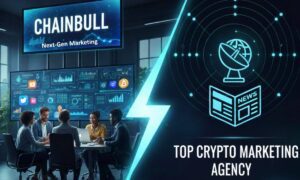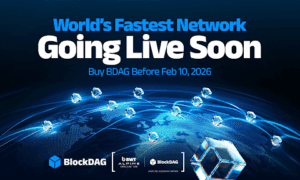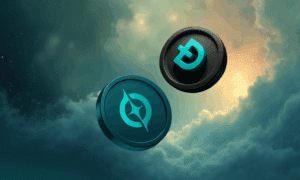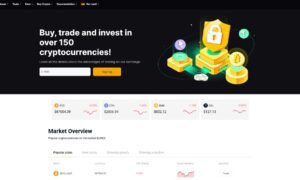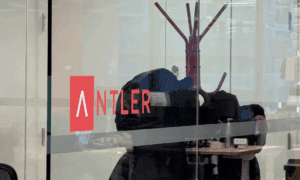For over two decades, marketing for detox centers has transformed dramatically, shifting from traditional outreach methods to a sophisticated digital-first approach. As someone who has spent more than 20 years in digital marketing, I’ve watched firsthand how technological advancements, regulatory changes, and shifts in consumer behavior have reshaped the industry.
Marketing detox centers isn’t just about filling beds—it’s about saving lives. The right marketing strategy can connect someone in crisis with the help they desperately need. In this article, we’ll explore how detox center marketing has evolved, the challenges that have arisen, and what the future holds for this critical industry.
The Early 2000s: Traditional Advertising & Word-of-Mouth Dominance
Twenty years ago, detox center marketing largely relied on traditional methods: television commercials, radio spots, billboards, and print ads. Many facilities also depended heavily on word-of-mouth referrals from medical professionals, hospitals, and community organizations.
While these approaches worked to an extent, they had major limitations. Measuring success was difficult, outreach was geographically limited, and stigma often prevented people from engaging with ads in public spaces. The marketing landscape was due for a transformation, and the internet provided the catalyst.
The Rise of Digital Marketing & SEO (2010s)
The 2010s saw the rise of digital marketing as the dominant force in the industry. Detox centers began investing in websites, search engine optimization (SEO), and paid search campaigns to reach people actively searching for addiction treatment services.
- Search Engine Optimization (SEO): Detox centers quickly realized the importance of ranking for key terms like “detox centers near me” or “best drug detox programs.” Facilities that mastered SEO saw a significant boost in inquiries. High-quality content, local SEO strategies, and authoritative backlinks became essential.
- Pay-Per-Click (PPC) Advertising: Google Ads allowed detox centers to appear at the top of search results, giving them instant visibility. However, the competition drove costs up, making it necessary to refine targeting strategies and improve landing pages for better conversions.
- Content Marketing: Educational blogs, testimonials, and video content became powerful tools for engaging potential patients. Resources like Detox Local’s directory of detox centers made it easier for individuals to find nearby treatment options.
- Social Media & Community Engagement: Facebook groups, online forums, and social media ads helped detox centers reach those in need and their loved ones, reducing stigma and encouraging more people to seek help.
Regulatory Challenges: The Crackdown on Deceptive Practices (2017-2020)
While digital marketing provided many benefits, it also led to challenges. Some detox centers engaged in unethical practices, such as lead brokering (selling patient inquiries to other treatment centers) and misleading advertising. In response, Google and Facebook implemented strict advertising regulations.
- Google’s Addiction Treatment Ad Ban (2017): Google temporarily banned all addiction treatment ads to combat deceptive practices. This forced detox centers to refine their SEO and content strategies.
- Google’s LegitScript Certification (2018): To regain access to PPC advertising, detox centers had to obtain LegitScript certification, ensuring they met high ethical and transparency standards.
- Facebook & Social Media Restrictions: Platforms like Facebook also imposed restrictions, requiring detox centers to verify their legitimacy before running ads.
These regulatory changes helped improve industry standards, ensuring that marketing efforts genuinely connected people with legitimate treatment options rather than exploiting them for profit.
The 2020s: Personalization, AI, and Advanced Data Analytics
In the past few years, detox center marketing has become more data-driven and personalized than ever before. The key trends shaping today’s landscape include:
- AI-Powered Marketing: AI-driven chatbots, predictive analytics, and automated content creation are helping detox centers personalize outreach. AI can assess a visitor’s behavior on a website and provide tailored recommendations.
- Hyper-Local Marketing: Facilities have refined their local SEO strategies to ensure they appear in Google Maps and local search results. Centers like Tennessee Detox Center are optimizing for location-based keywords to better serve their communities.
- Telehealth & Virtual Consultations: The COVID-19 pandemic accelerated the adoption of telehealth services. Detox centers now promote virtual assessments, allowing individuals to explore treatment options before committing to in-person care.
- Advanced CRM & Retargeting: Marketing automation platforms help detox centers nurture leads over time. Retargeting ads remind website visitors about available resources, keeping the facility top of mind when they’re ready to seek help.
The Future of Detox Center Marketing: Ethics, Innovation & Accessibility
Looking ahead, detox center marketing will continue evolving to meet new challenges and opportunities:
- Greater Emphasis on Ethical Marketing: Expect stricter regulations and higher transparency standards to prevent exploitation. Facilities that prioritize honest messaging and ethical marketing will thrive.
- Voice Search & AI Integration: As voice search becomes more common, detox centers will need to optimize for conversational search queries like “Where can I detox safely?”
- Diversity & Inclusion in Messaging: Marketing campaigns will become more inclusive, addressing the unique needs of different demographics, including BIPOC and LGBTQ+ communities.
- More Interactive Content: Virtual tours, 360-degree facility videos, and immersive storytelling will help prospective patients feel more comfortable before taking the first step.
Why This Matters: Detox Marketing Saves Lives
At its core, marketing for detox centers is about more than business growth—it’s about saving lives. Every click on a well-placed ad, every organic search result that leads to a helpful blog, and every conversation sparked by social media engagement has the potential to connect someone with life-saving care.
By embracing ethical, data-driven marketing strategies, detox centers can reach those in crisis at the right moment. If you or a loved one is seeking help, resources like Detox Local’s directory and treatment centers like Tennessee Detox Center are dedicated to providing compassionate, professional care.
The past 20 years have proven that marketing isn’t just about visibility—it’s about impact. And when done right, detox center marketing doesn’t just drive traffic; it changes lives.


